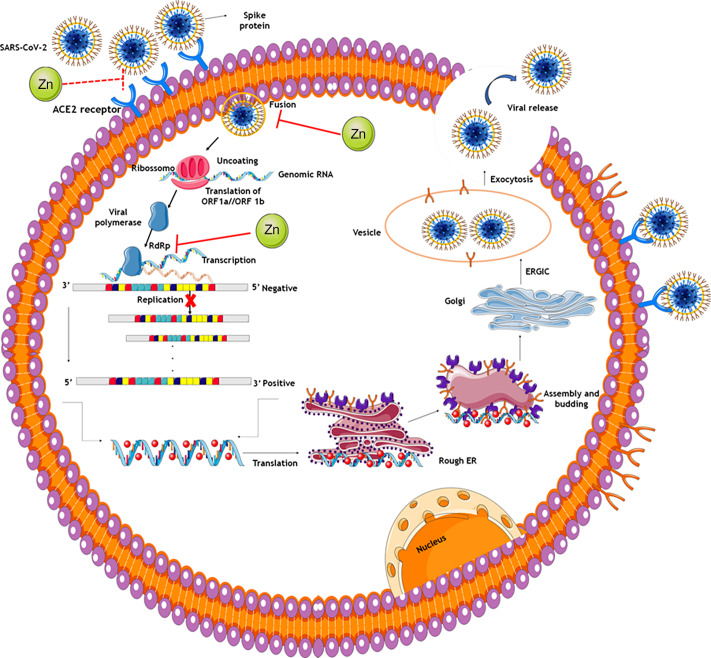Fig. 2.
Potential mechanisms of zinc in COVID-19 therapy. The spike proteins of SARS-CoV-2 bind to ACE2 receptors. The virion then releases the RNA genome into the cell and translation of structural and non-structural proteins follows. ORF1a and ORF1ab are translated to produce pp1a and pp1ab polyproteins, which are cleaved by the proteases that are encoded by ORF1a to yield non-structural proteins. This is followed by assembly and budding into the lumen of the ERGIC. Virions are then released from the infected cell through exocytosis. Zinc might also possess antiviral activity through inhibition of RdRp and reduction in template binding. Indirect evidence also indicates that zinc might decrease ACE2 activity, known to be the receptor for SARS-CoV-2, contributing to inhibit the fusion of SARS-CoV-2 in the cell membrane. ACE2: angiotensin-converting enzyme 2; Rough ER: rough endoplasmic reticulum; ERGIC: endoplasmic reticulum–Golgi intermediate compartment.

